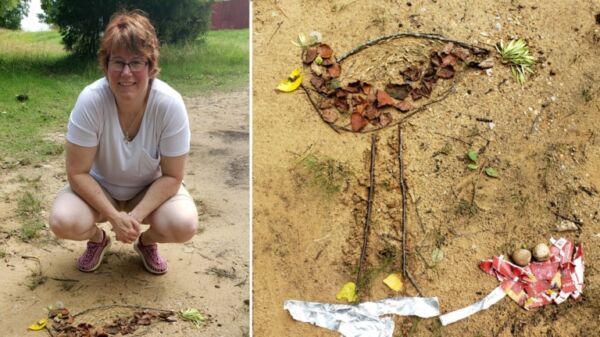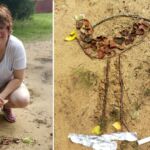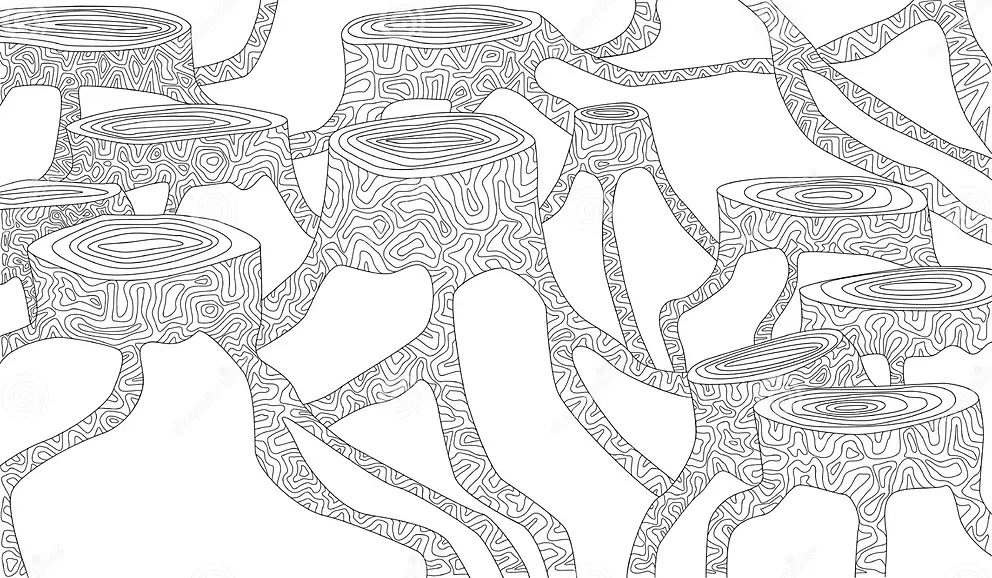Story Info
Story Info

Sasha Daucus
Sportsman Park, Poplar Bluff, Missouri, USA
2019
Type of Wounded Place
Story & Experience
Annette Joseph, an Episcopal Priest working in rural Missouri, and I met at Sportsman Park in Poplar Bluff, Missouri, to do a Global Earth Exchange. Our focus was on “Baseline Creep”, a term that describes what we know to be the norm that is slowly changing. After taking some time to quietly experience the area we came back to share about it.
Both of us had experienced that there was a lot more to the area than initially met the eye, and that the wild plants and animals were making as much use of this small area as possible, with numerous birds and species of plants. What initially looked like a very manicured area, actually held quite a bit of diversity. Annette shared how she had noticed that just by walking a short distance from the parking lot, the birds already were feeling more like it was ‘their place’ and seemed disturbed by her intrusion.
She also talked about how recently she’d learned that 38 states border on the Mississippi (which is close by) and how complicated it can be to try and manage the issues that are leading to flooding on the Mississippi.
She also said that it had made her think of the book of Jeremiah, where the Jews leave Israel and go into bondage. The writer Walter Brueggemann has suggested that they had to leave Israel because they had used up the land and the land had to be left alone for a while to recover. They were forced into bondage due to their own acts of not paying attention to their effects on the land. This was interesting to me, thinking about other abandoned places I’ve seen and wondered about like the Cahokia Mounds on the Mississippi River near St. Louis which was a highly developed Native American culture that seemed to disappear around the 1300, and also of Mesa Verde where the people also left around 1285. Were these places abandoned because the ecology could no longer support them?
We also talked about how easy it is to overlook small ecological losses, and maybe not even be able to see the big picture of what is happening. For rivers, a lot of the damage is done in the very small streams in the hills of the Ozarks, as they flow down to the larger rivers like the Black River and then the Mississippi. The accumulations of smaller damages then can lead to larger ones downstream.
Speaking of this and about where we both feel the world is with Climate Change, it was encouraging to think how even as small wounds can accumulate to larger ones, also small acts of education and creativity can move things the other direction. The Israelites eventually did return to their land when it recovered, but a much smaller group. Others of their group had adapted in other ways and gone on to new lives, some as Samaritans trying to be good neighbors where they could, in spite of being despised by the Israelites for having let go of the ‘old ways.’ Says Annette, “I hope to bring some new things into the church. One idea is really celebrating Rogation Sunday with a blessing of the crops and land. Other things would be to really celebrate harvest time in some tangible way. Our tie to creation and being created beings who should care for the earth home is a way to tie all this together and raise awareness in the pews. It’s important to remember nothing we have is ours, they are all gifts from God. Awakening our awareness to creation and our connection to it always should be one of our hopes. It is important to tie the church’s ceremonies to creation when we can and remind people of this sacred trust we have been given.” Why this Place? I chose this location because it’s a place I’m familiar with, where you can go to the Black River when you are in the city of Poplar Bluff. It’s part city and part river ecology. It has a well-tended, slightly sanitized feeling to it, rather than the less manicured feeling of an unmanaged river. It felt like a convenient place to talk about ‘baseline creep’ (small gradual changes to what is expected of a place in terms of ecological quality) for the rivers in my area.
We gathered objects from around the area to create a bird- somewhat like a heron, somewhat like a duck—it is definitely a water bird. It has a nest with two eggs in it. May this act of beauty have many fledglings!
Annette Joseph, an Episcopal Priest working in rural Missouri, and I met at Sportsman Park in Poplar Bluff, Missouri, to do a Global Earth Exchange. Our focus was on “Baseline Creep”, a term that describes what we know to be the norm that is slowly changing. After taking some time to quietly experience the area we came back to share about it.
Both of us had experienced that there was a lot more to the area than initially met the eye, and that the wild plants and animals were making as much use of this small area as possible, with numerous birds and species of plants. What initially looked like a very manicured area, actually held quite a bit of diversity. Annette shared how she had noticed that just by walking a short distance from the parking lot, the birds already were feeling more like it was ‘their place’ and seemed disturbed by her intrusion.
She also talked about how recently she’d learned that 38 states border on the Mississippi (which is close by) and how complicated it can be to try and manage the issues that are leading to flooding on the Mississippi.
She also said that it had made her think of the book of Jeremiah, where the Jews leave Israel and go into bondage. The writer Walter Brueggemann has suggested that they had to leave Israel because they had used up the land and the land had to be left alone for a while to recover. They were forced into bondage due to their own acts of not paying attention to their effects on the land. This was interesting to me, thinking about other abandoned places I’ve seen and wondered about like the Cahokia Mounds on the Mississippi River near St. Louis which was a highly developed Native American culture that seemed to disappear around the 1300, and also of Mesa Verde where the people also left around 1285. Were these places abandoned because the ecology could no longer support them?
We also talked about how easy it is to overlook small ecological losses, and maybe not even be able to see the big picture of what is happening. For rivers, a lot of the damage is done in the very small streams in the hills of the Ozarks, as they flow down to the larger rivers like the Black River and then the Mississippi. The accumulations of smaller damages then can lead to larger ones downstream.
Speaking of this and about where we both feel the world is with Climate Change, it was encouraging to think how even as small wounds can accumulate to larger ones, also small acts of education and creativity can move things the other direction. The Israelites eventually did return to their land when it recovered, but a much smaller group. Others of their group had adapted in other ways and gone on to new lives, some as Samaritans trying to be good neighbors where they could, in spite of being despised by the Israelites for having let go of the ‘old ways.’ Says Annette, “I hope to bring some new things into the church. One idea is really celebrating Rogation Sunday with a blessing of the crops and land. Other things would be to really celebrate harvest time in some tangible way. Our tie to creation and being created beings who should care for the earth home is a way to tie all this together and raise awareness in the pews. It’s important to remember nothing we have is ours, they are all gifts from God. Awakening our awareness to creation and our connection to it always should be one of our hopes. It is important to tie the church’s ceremonies to creation when we can and remind people of this sacred trust we have been given.” Why this Place? I chose this location because it’s a place I’m familiar with, where you can go to the Black River when you are in the city of Poplar Bluff. It’s part city and part river ecology. It has a well-tended, slightly sanitized feeling to it, rather than the less manicured feeling of an unmanaged river. It felt like a convenient place to talk about ‘baseline creep’ (small gradual changes to what is expected of a place in terms of ecological quality) for the rivers in my area.
We gathered objects from around the area to create a bird- somewhat like a heron, somewhat like a duck—it is definitely a water bird. It has a nest with two eggs in it. May this act of beauty have many fledglings!
Sportsman Park, Poplar Bluff, Missouri, USA
RECENT STORIES
Remembrance Day for Lost Species in Helsinki 2023
On November 30th, there was first a session organized by the Finnish social and health sector project about eco-anxiety and eco-emotions (www.ymparistoahdistus.fi). This “morning coffee roundtable”, a hybrid event, focused this time on ecological grief [...]
Ashdown Forest
Ashdown Forest is an area of natural beauty in West Sussex, England. It is also one of the very few remaining areas of extensive lowland heath left in Europe. This rare and threatened landscape is [...]



